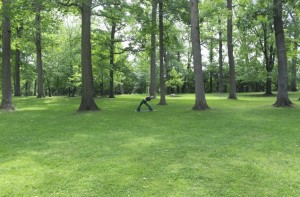The UK has some of the most stunning countryside in the world. There are even protections in place to preserve it in many areas. While that is a really good thing, it does cause difficulties for developments. We want to have a look today at building on Green Belt land. We’ll discuss what it is, what you need to do, and more. Then, if you want help with residential architecture in London, you can speak to us.
Protection
 The initial idea to protect land dates back to the 1930s. It came as a response to the rapid growth and expansion of big cities. There were fears that if it continued, it would damage the countryside, lead to towns and cities merging, and destroy the characteristics of historic locations. So, in 1947 we got the Town and Country Planning Act. It gives protection to Green Belt land, meaning it is much harder to develop it.
The initial idea to protect land dates back to the 1930s. It came as a response to the rapid growth and expansion of big cities. There were fears that if it continued, it would damage the countryside, lead to towns and cities merging, and destroy the characteristics of historic locations. So, in 1947 we got the Town and Country Planning Act. It gives protection to Green Belt land, meaning it is much harder to develop it.
Many people think that the whole of the countryside is Green Belt. In reality though, only specific pieces of land have the protection. You can generally find them around the biggest towns and cities, including London, Manchester, and Birmingham.
Some people also confuse Green Belt land and Greenfield. They are actually different. Greenfields are plots that have never been built on. They are generally areas of grassland or farmland. However, they don’t have the same level of protection.
Building
Whether you are thinking about residential architecture in London or projects in other areas, it is much harder to get planning permission for Green Belt land. This is especially true when it comes to larger developments. Individual homes are more likely to get it if they can show minimal impact on the environment. It also helps if they have exceptional designs that add a low of value.
It is important to note that proposals to create affordable housing won’t have an advantage. While they can convince councils to allow permission in urban areas, it is generally not enough to get approval for building on Green Belt land.
Councils will consider a number of crucial factors when they look at planning applications for the Green Belt. Crucially, they will look at whether the land has scientific value, heritage value, or natural beauty. In addition, they will do assessments to look at things like flood risk.
While it is harder to get approval, thousands of projects have gotten a green light in the past decade. In fact, some claim the government has eased protections to keep up with housing targets. Some areas have even seen slight changes in the boundaries for the Green Belt.
In the past the idea of land protections would be enough to deter investors. However, there are more benefits now than ever before. Projects that can successfully get planning permission could be lucrative. This puts more emphasis on creating exceptional, innovative designs.
Talk to us about residential architecture in London
Coffey Architects has a lot of experience with planning permission. It is something we can assist clients with. We understand how vital it is to consider the setting here and local rules. Working with both in mind can result in much better designs and makes it more likely that projects will get approval.
So, if you’re looking at any kind of project, including ones on Green Belt land, we recommend you speak to us. We are particularly good at residential architecture in London. You can trust us to help you make a great investment, especially if we need to design it in a non-mainstream way.
